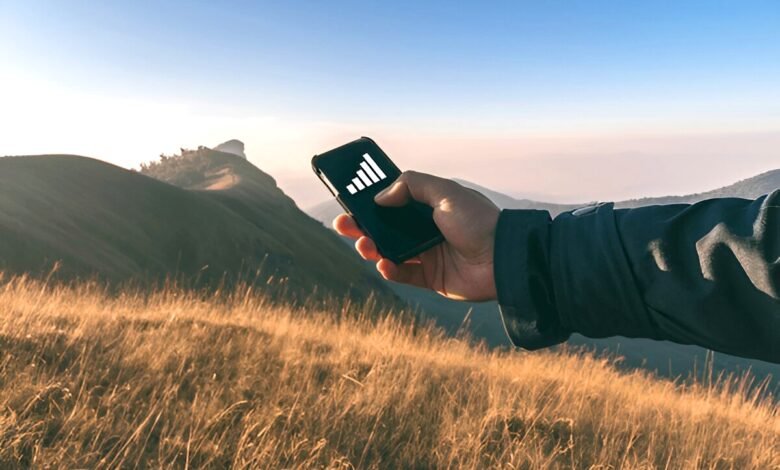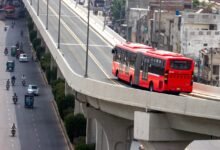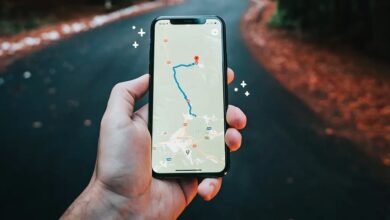How to Get the Best Signal in Low-Coverage Areas in Pakistan
Whether you're traveling, living in a low-coverage zone, or dealing with poor network reception, improving your signal in low-coverage areas is essential.

In Pakistan, mobile network coverage can be inconsistent, especially in rural regions, mountainous areas, and remote locations. Weak signals lead to dropped calls, slow internet speeds, and frustrating connectivity issues. Whether you’re traveling, living in a low-coverage zone, or dealing with poor network reception, improving your signal in low-coverage areas is essential.
This guide explores practical ways to boost your mobile signal, ensuring better call quality and faster data speeds. We’ll cover device optimizations, external boosters, and network-specific tips to help you stay connected.
Why Do Some Areas in Pakistan Have Weak Signals?
Before diving into solutions, it’s important to understand why certain regions suffer from poor connectivity.
1. Geographical Challenges
Pakistan’s diverse terrain—including mountains, deserts, and thick forests—can block signals. Remote areas often lack sufficient cellular towers, leading to weak reception.
2. Distance from Cell Towers
Mobile signals weaken with distance. If you’re far from the nearest tower, your phone struggles to maintain a strong connection.
3. Network Congestion
In cities, too many users on a single tower can slow down speeds. In contrast, rural areas may have outdated or insufficient infrastructure.
4. Building Materials
Concrete walls, metal roofs, and energy-efficient glass can interfere with signals indoors.
Understanding these factors helps in choosing the right solution for better signal in low-coverage areas.
How to Improve Signal in Low-Coverage Areas
1. Switch to a Network with Better Coverage
Not all telecom providers offer equal coverage. In Pakistan, some networks perform better in rural areas than others.
Steps to Check the Best Network:
- Ask locals which network works best in the area.
- Use coverage maps from providers like Jazz, Zong, Telenor, and Ufone.
- Insert different SIMs to test signal strength.
Pro Tip: Zong and Jazz generally have wider coverage in remote regions, while Telenor performs well in urban areas.
2. Use a Signal Booster or Repeater
A mobile signal booster amplifies weak signals, enhancing call quality and internet speed.
How It Works:
- Outdoor Antenna—Captures weak signals.
- Amplifier—Boosts the signal strength.
- Indoor Antenna—Distributes the enhanced signal inside your home or vehicle.
Best Signal Boosters in Pakistan:
- Huawei Signal Booster
- TP-Link 4G Repeater
- SureCall Flare 3.0
Installation Tip: Place the outdoor antenna as high as possible for maximum reception.
3. Enable Wi-Fi Calling (If Available)
Many Pakistani telecom providers now support Wi-Fi calling, allowing calls over Wi-Fi instead of cellular networks.
Read More: Jazz Internet Packages 2024: 3G, 4G, Daily, Weekly, and Monthly
How to Activate Wi-Fi Calling:
Jazz: Dial *111#and check Wi-Fi call settings.- Zong: Go to Settings > Mobile Networks > Wi-Fi Calling.
- Telenor & Ufone: Contact customer support for availability.
Advantage: Works even with weak cellular signals if you have stable Wi-Fi.
4. Use an External Antenna for Mobile Routers
If you rely on a 4G USB dongle or portable router, an external antenna can significantly improve reception.
Types of Antennas:
- Omni-directional—Captures signals from all directions (good for moderate coverage).
- Directional (Yagi antenna) – Focuses on a single tower (best for very weak signals).
Installation Guide:
- Connect the antenna to your router’s external port.
- Point it toward the nearest cell tower (use apps like OpenSignal to locate towers).
5. Keep Your Phone Near Windows or Higher Ground
Small adjustments in phone placement can make a big difference.
Tips for Better Indoor Reception:
- Avoid basements—signals weaken underground.
- Stand near windows—fewer obstructions mean better reception.
- Go to a rooftop—higher elevation improves signal strength.
Pro Tip: If you’re in a vehicle, stopping near an open area can help regain signal.
6. Switch Between 3G/4G Manually
Sometimes, forcing your phone to use 3G instead of 4G (or vice versa) can improve connectivity.
How to Change Network Mode:
- Android: Settings > Mobile Networks > Preferred Network Type
- iPhone: Settings > Cellular > Cellular Data Options > Voice & Data
Why This Works:
- 4G offers faster data but weaker coverage.
- 3G has a wider reach in rural areas.
7. Invest in a Femtocell (Mini Cell Tower)
A femtocell acts like a personal cell tower, connecting to your broadband to provide strong indoor signals.
Best Femtocells in Pakistan:
- Zong 4G Wi-Fi Device
- Jazz Portable Tower
Ideal For: Homes or offices with persistent weak signals.
8. Avoid Using Your Phone During Peak Hours
Network congestion slows speeds. If possible, schedule downloads and calls during off-peak times (early morning or late night).
9. Update Your Phone’s Software
Manufacturers release updates that optimize signal reception. Ensure your device runs the latest OS version.
10. Carry a Satellite Phone for Extreme Remote Areas
For areas with zero network coverage (e.g., northern mountains), a satellite phone ensures connectivity.
Options in Pakistan:
- Thuraya SatSleeve (Turns your smartphone into a satellite phone)
- Inmarsat IsatPhone 2
Downside: Expensive, but crucial for emergencies.
Frequently Asked Questions (FAQs)
Q1. Which network has the best coverage in rural Pakistan?
A: Jazz and Zong typically have the widest rural coverage.
Q2. Do aluminum foil boosters really work?
A: Partially. Wrapping foil around your phone’s antenna can marginally improve reception, but it’s not a long-term fix.
Q3. How can I check my current signal strength?
A: Dial *#0011# (for Samsung) or use apps like Network Signal Info.
Q4. Are signal boosters legal in Pakistan?
A: Yes, but they must be PTA-approved to avoid legal issues.
Conclusion
Getting a strong signal in low-coverage areas in Pakistan requires a mix of network selection, signal boosters, and device optimizations. Whether you’re in a remote village or a congested city, these strategies can drastically improve your connectivity.











